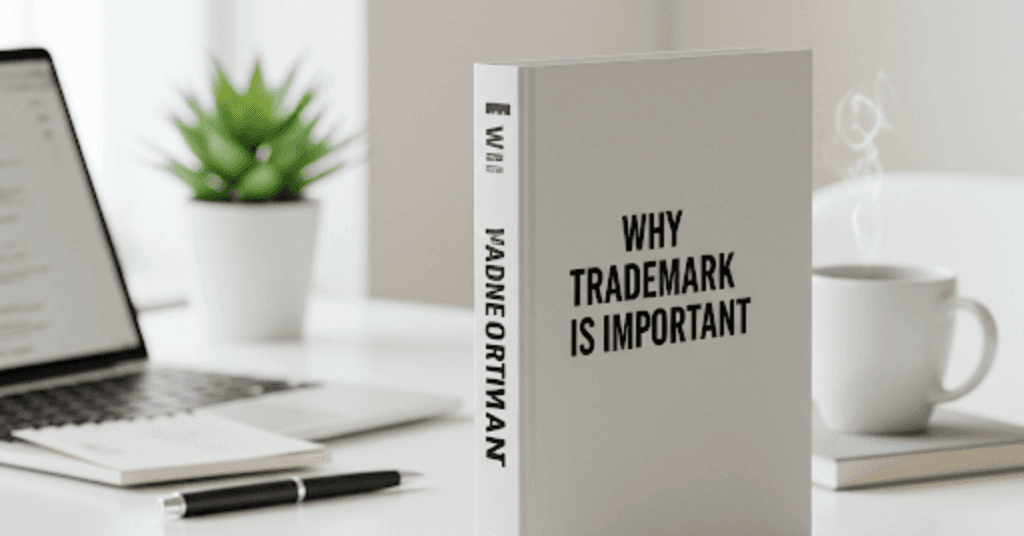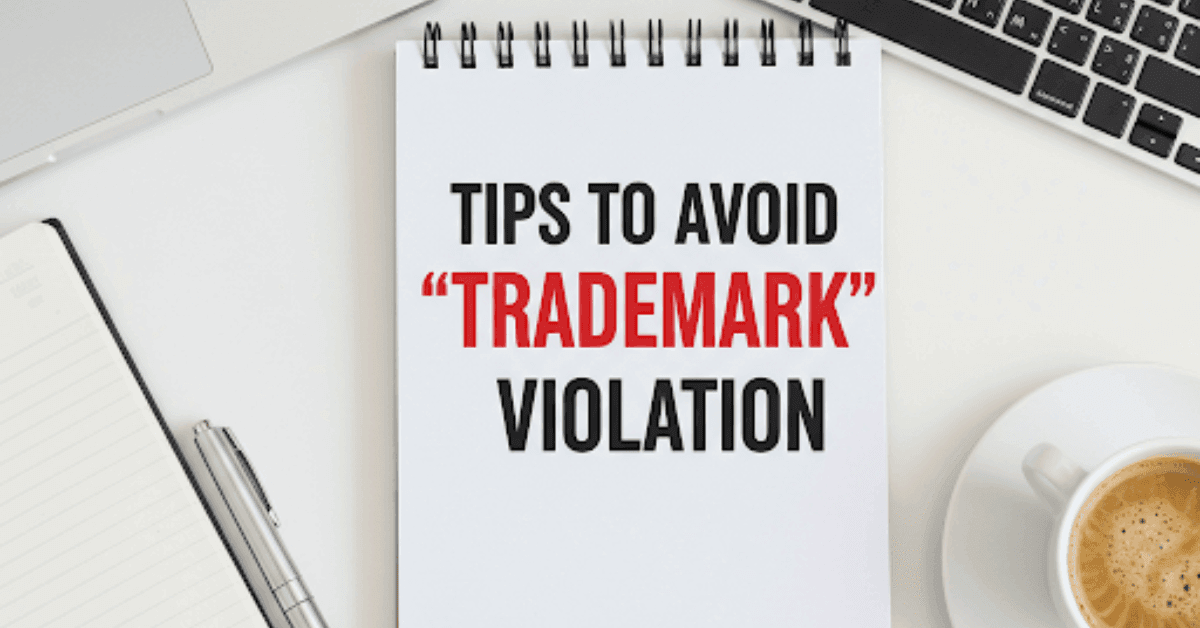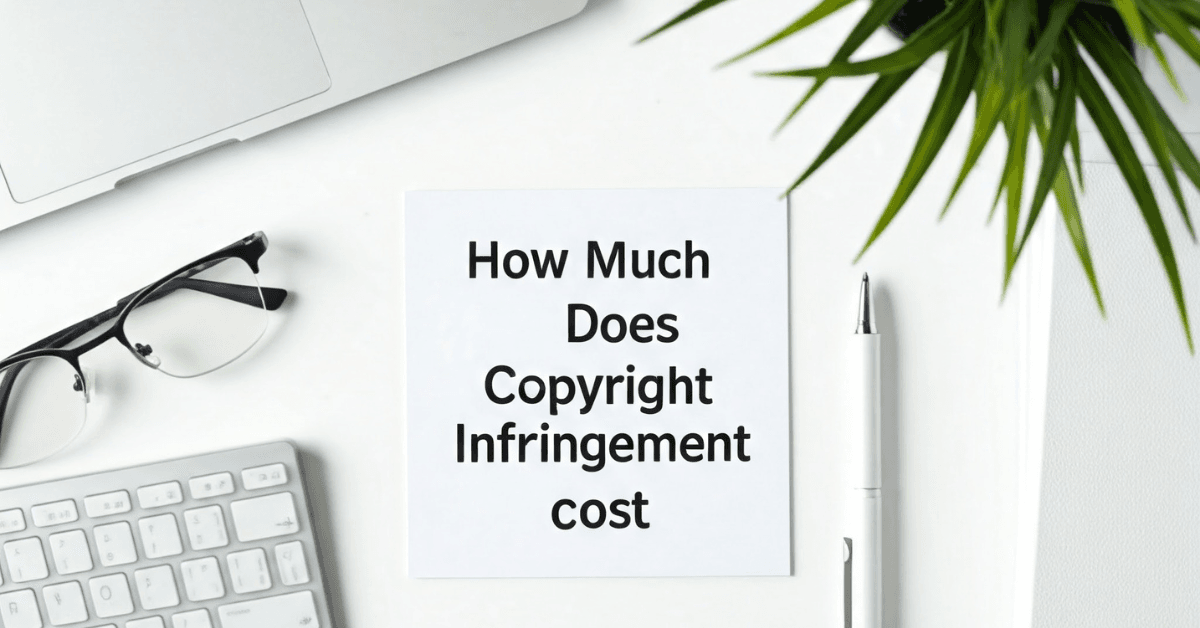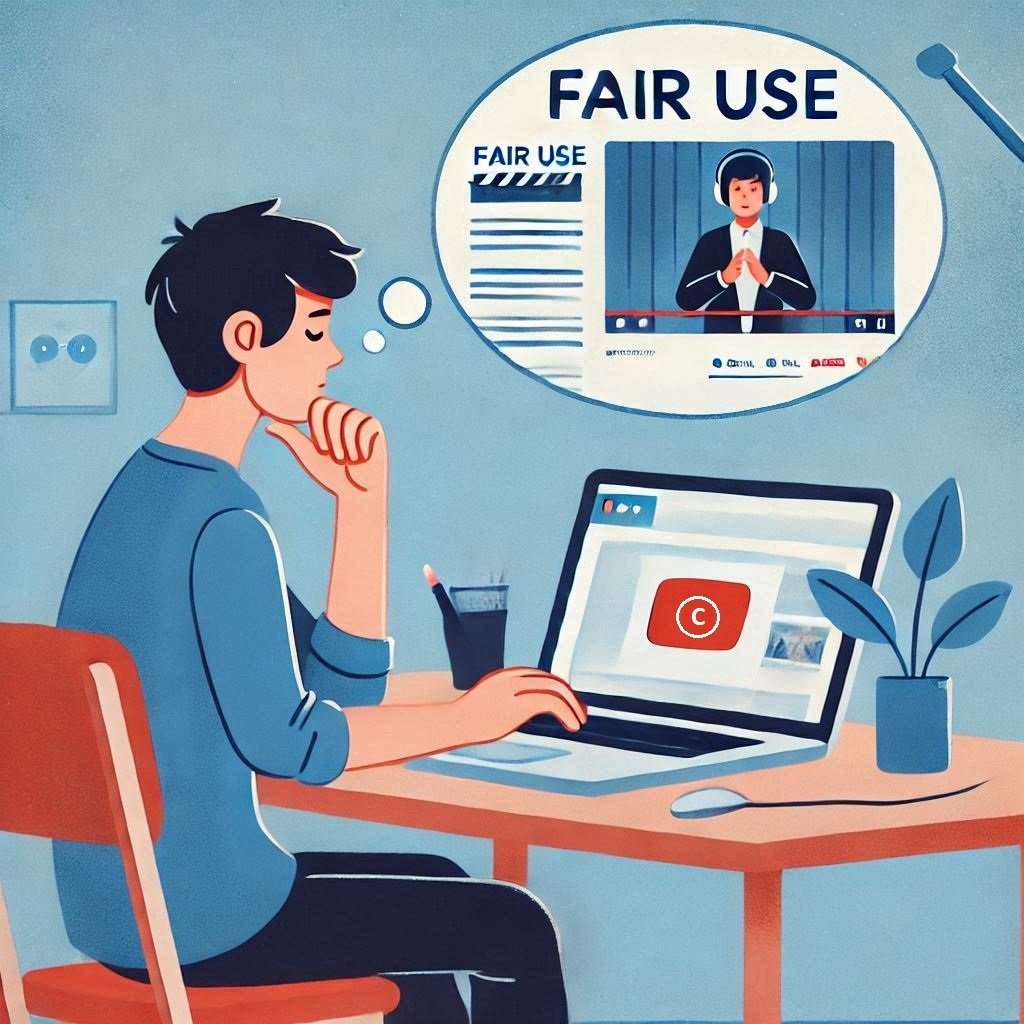Have you ever wondered if your business name, logo, or slogan might accidentally infringe on someone else’s trademark? Or worse, what if you unknowingly end up in a legal dispute over a trademark?
For businesses and individuals alike, understanding how to avoid trademark infringement is crucial to safeguarding your own hard work and reputation.
Table of Contents
Trademarks are everywhere, from the logo on your coffee cup to the name of your favorite online store. But how do you ensure your ideas don’t clash with someone else’s?
How can you avoid infringing on a trademark and protect your business from costly lawsuits? In this guide, we’ll explore the top 10 ways to avoid trademark infringement and protect your brand, the common mistakes to watch out for, and real-life lessons from famous trademark infringement cases.
What is a Trademark, and Why is it Important?
Have you ever wondered what makes brands like Apple, Nike, or Coca-Cola instantly recognizable? It’s their trademark—a unique symbol, name, logo, or phrase that represents their brand and distinguishes it from others.
The Lanham Act, which is the primary federal statute governing trademarks in the United States(U.S.).
A trademark is a form of intellectual property that protects the identity of a business. It ensures that no one else can use your brand name, logo, or design to sell similar goods or services. Trademarks can include:
- Brand names (like “Google”).
- Logos (like McDonald’s golden arches).
- Slogans (like Nike’s “Just Do It”).
- Unique product packaging (like the Coca-Cola bottle).
Why is a Trademark Important?

Trademarks are more than just legal protections—they’re essential for building trust and recognition. Here’s why they matter:
- Protects Your Brand Identity: A trademark ensures that your brand remains unique and prevents others from copying or using something similar to confuse customers.
- Builds Consumer Trust: When customers see a familiar trademark, they know what to expect in terms of quality and service, fostering loyalty.
- Prevents Market Confusion: Without trademarks, customers could easily confuse your product with another brand. A strong trademark helps them distinguish your offerings from competitors.
- Adds Business Value: A trademark is a valuable asset. As your business grows, its value increases, and many businesses even license their trademarks for additional revenue.
- Protects Against Infringement: Registering a trademark gives you legal rights to take action against anyone who uses your brand without permission.
- Global Recognition: If your business expands internationally, trademarks help establish your presence in foreign markets.
Trademarks are the backbone of a brand’s identity. They help your business stand out, protect your reputation, and build customer trust.
What Is Trademark Infringement?

Trademark infringement occurs when a brand or business uses a trademark similar to another’s without permission. It can happen in many ways. Understanding how to avoid trademark infringement is essential to prevent legal disputes and protect your business.
Types of Trademark Infringement
Let’s explore the two main types of trademark infringement and how they work.
1. Direct Infringement
Direct infringement occurs when someone uses an identical or similar trademark to yours, confusing customers. This often leads to a misunderstanding about the brand’s origin.
Likelihood of Confusion: Courts assess whether there’s a likelihood that customers will be confused. For example, the AMF Inc. v. Sleekcraft Boats case used several factors to determine if trademark infringement occurred. These factors include:
- Strength of the Mark: How unique or famous is the trademark? The more unique, the stronger it is.
- Proximity of Goods: Are the products or services similar or sold in the same place? If yes, there’s more chance of confusion.
- Similarity of Marks: Do the trademarks look or sound alike? The more similar they are, the easier it is to mix them up.
- Evidence of Actual Confusion: Are there real examples of people getting confused by the trademarks? This shows there’s a problem.
- Marketing Channels: Are the products advertised or sold in the same way? If they are, people might get confused.
2. Indirect Infringement
Indirect infringement involves two types:
- Contributory Infringement: It Occurs when someone helps another person infringe on a trademark.
Example: Imagine a website sells fake Nike shoes. If another company provides the website’s platform knowing they sell fake shoes, that company is contributing to the infringement.
- Vicarious Infringement: This happens when a business profits from another’s infringement and has control over them.
- Example: Think of a flea market where vendors sell fake branded clothes. If the flea market owners profit from these sales and have control over what is being sold at their market, they are vicariously infringing on trademarks.
By knowing how to avoid trademark infringement, businesses can reduce their risk of indirect infringement.
Can Someone Copy Your Unregistered Brand?
Ever wondered how brands protect their identity even without a registered trademark? This is where passing off comes into play, often referred to as unfair competition or misrepresentation in the U.S.
Passing off is a legal remedy used to prevent others from misleading consumers into believing their products or services are associated with another brand. This protection is crucial for businesses that haven’t registered their trademarks but have built a strong reputation and goodwill.
The landmark passing off case in the UK is Reckitt & Colman Ltd. v. Borden Inc. [1990] 1 WLR 491.
This case is significant because it established the “classic trinity” test for passing off in the UK. The court held that a plaintiff must prove three elements to succeed in a passing off claim:
- Goodwill: The plaintiff must demonstrate that they have established goodwill and reputation in the relevant market associated with their product or business.
- Misrepresentation: The defendant’s actions must have caused or are likely to cause confusion or deception among consumers, leading them to believe that the defendant’s goods or services originate from the plaintiff.
- Damage: The plaintiff must prove actual or potential damage to their business as a result of the misrepresentation. This can include loss of sales, damage to reputation, or dilution of goodwill.
Top 10 Ways to Avoid Trademark Infringement and Protect Your Brand

Imagine you worked really hard to create a unique brand, only to find someone else using it without your permission. This is called trademark infringement, and it can hurt your brand and cost you money. But don’t worry. You can protect your brand with the right information. Properly understanding trademark infringement cases is key.
Here are the top 10 ways to avoid trademark infringement and protect your brand in every way:
1. Find Out if Your Brand is Already Taken
Before you launch your brand, you need to check if it’s already being used.
- Check official records: Before using a new mark, search the regional database to ensure it’s not already in use.(e.g. USPTO in US, UAE Ministry of Economy’s database, etc.).
- Look worldwide: Check international records like WIPO’s Global Brand Database.
- Search online: Look online to see if anyone else is using a similar brand.
One landmark judgment that highlights the importance of trademark searches is The Coca Cola Co. vs. Bisleri International Pvt. Ltd.(2009).
In this case, Bisleri originally owned the trademark for the beverage “MAAZA,” which they later sold to Coca-Cola in India. However, Bisleri later applied for the registration of the “MAAZA” trademark in Turkey and began exporting mango drinks with that trademark. Coca-Cola successfully obtained a temporary injunction against Bisleri for trademark infringement.
2. Make Your Brand Unique
Always choose distinctive and unique trademarks that are easy to recognize. Creating strong marks means picking brand names or logos that are unique and stand out. Here’s how to make your trademark strong:
- Be Unique: Avoid common words or phrases. Choose something that’s different from what others are using. For example, don’t use names like “The Best Pizza.” They are too common and hard to protect.
- Make It Catchy: Pick a name or logo that’s easy to remember and recognize.
- Stand Out: Ensure your trademark is distinctive so it doesn’t get confused with others.
- Be creative: Come up with a unique and catchy name or logo. This will make your brand stand out and less likely to be copied.
In the Qualitex Co. v. Jacobson Products Co. case (514 U.S. 159, 1995), the Supreme Court decided that a color can be a trademark. Qualitex had used a special green-gold color on their dry-cleaning pads. When Jacobson Products used a similar color, Qualitex sued them. The lower court supported Qualitex, but the Ninth Circuit disagreed, saying colors couldn’t be trademarks.
The Supreme Court reversed this, ruling that colors can be trademarks if they identify the product’s source and don’t serve any other purpose. This decision is important because it shows how a unique color can protect a brand’s identity.
3. Register Your Brand Officially
Registering your trademark gives your brand legal protection.
- Easier to stop others: It makes it easier to stop people from using your brand without permission.
- Deters others: Registering your brand often stops others from using it.
Trademarks in the US can be registered with the United States Patent and Trademark Office (USPTO).
4. Use the ™ or ® Symbol:
Using the ™ or ® symbols is a simple way to show that your brand name or logo is protected by trademark laws.
- ™ Symbol: This can be used even if you haven’t officially registered your trademark. It tells people that you consider this brand name or logo as your trademark.
- ® Symbol: This symbol is used only for trademarks that are officially registered with the government (like the USPTO in the U.S.). It shows that your trademark has legal protection.
Using these symbols helps warn others not to use your brand without permission and shows that you’re serious about protecting your brand.
5. Watch Out for Others Using Your Brand (Monitor Your Mark)
Monitoring your mark means keeping an eye out to make sure no one is using your trademark without permission. This includes:
- Regularly searching online to see if others are using your brand name or logo.
- Checking for similar businesses that might be copying your brand.
- Setting up alerts to be notified if your trademark appears somewhere unexpectedly.
By doing this, you can catch any unauthorized use early and take action to protect your brand.
In Jack Daniel’s v. Patrick Wensink, Jack Daniel’s monitored and issued a friendly cease-and-desist letter when a book cover resembled their trademark.
6. Take Legal Action if Needed
If someone is using your brand and won’t stop, you may need to take legal action.
- Protect your rights: This might mean going to court to stop them from using your brand.
7. Tell Your Team and the Public
Everyone needs to know about your brand.
- Inform your team: Tell your team about your trademark and how to spot problems.
- Tell the public: Let the public know what your trademark looks like to help them identify fake products.
8. Protect Your Brand Worldwide
If you plan to sell your products or services in other countries, you need to protect your brand there too.
- Register internationally: Register your trademark in other countries to protect your brand worldwide.
9. Update and Renew Registrations
- Keep It Current: Make sure your trademark registration is always up-to-date.
- Renew Regularly: Trademarks need to be renewed periodically (usually every 10 years in the U.S.). This keeps your legal protection active.
- Stay Protected: Renewing your trademark helps protect your brand from being used by others.
Strong trademarks are easier to protect and help your brand be memorable.
10. Use Clear Licensing Agreements
- Set Clear Rules: When you let others use your trademark, write down exactly how they can use it.
- Be Specific: Include details like how long they can use it, where they can use it, and any restrictions.
- Protect Your Brand: These agreements ensure your trademark is used correctly and keeps your brand’s image consistent.
Clear agreements help avoid misunderstandings and protect your brand’s value.
By following these tips, you can build a strong brand that is protected. Remember, it’s always better to prevent problems than to deal with them later.
How to Avoid Trademark Infringement: Common Defenses Explained

You might wonder whether using a trademark without facing consequences is possible. Sometimes, it is. There are several defenses to avoid trademark infringement that may help a defendant avoid liability.
Fair Use:
This allows the use of a trademarked term in a descriptive sense, not as a brand identifier. For example, using “apple” to describe an apple product, not the tech company.
Nominative Use:
This permits using a trademark to refer to the trademarked product itself, especially when there’s no other way to describe it. For instance, comparing a product to a well-known brand.
Lack of Likelihood of Confusion:
Arguing that there is no likelihood of consumer confusion between the two marks.
Non-Commercial Use:
Using the mark in a non-commercial context, such as for parody or commentary, which can be protected under the First Amendment.
Abandonment:
Claiming that the trademark owner abandoned the mark by not using it for a certain period. In most countries, it is a 5-year period.
Genericide:
Arguing that the trademark has become generic, meaning it’s commonly used to describe a type of product rather than a specific brand (e.g., “escalator” was once a trademark).
Prior Use:
Asserting that the defendant used the mark before the plaintiff registered it.
Consent:
Showing that the trademark owner consented to the defendant’s use of the mark.
Example: If Company A allowed Company B to use their trademarked logo in marketing materials through a formal agreement, Company B can argue that they had permission and consent from Company A to use the trademark. This consent can be used as a defense against any claims of trademark infringement.
Functionality Doctrine:
Arguing that the trademarked feature is functional and therefore not protectable.
Example: The shape of a beer bottle opener is functional because it is designed to open bottles. Since this shape is essential for the product’s purpose, it can’t be trademarked.
This means that competitors can use the same shape for their bottle openers without infringing on a trademark.
Laches:
Claiming that the trademark owner waited too long to bring the lawsuit, causing unfair prejudice to the defendant.
For example, Bright Shoes waits 5 years to sue Flash Footwear for copying their shoe design. Flash Footwear uses the laches defense, arguing Bright Shoes waited too long and it’s unfair to stop them now.
Conclusion
Knowing how to avoid trademark infringement is critical for anyone creating a brand. By conducting thorough searches, registering your trademark, and seeking legal advice, you can safeguard your brand and avoid costly legal battles.
If you’re unsure about your brand’s trademark compliance or need assistance resolving an infringement issue, consult a Trademark Agent. Taking the right steps today can help secure your brand’s future.




